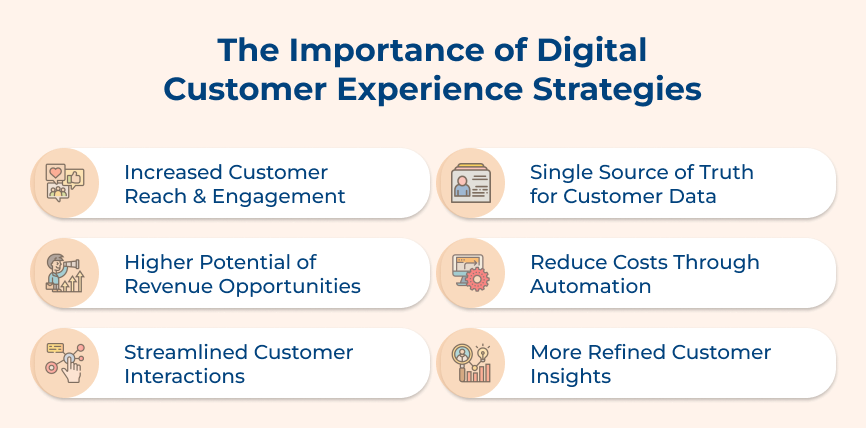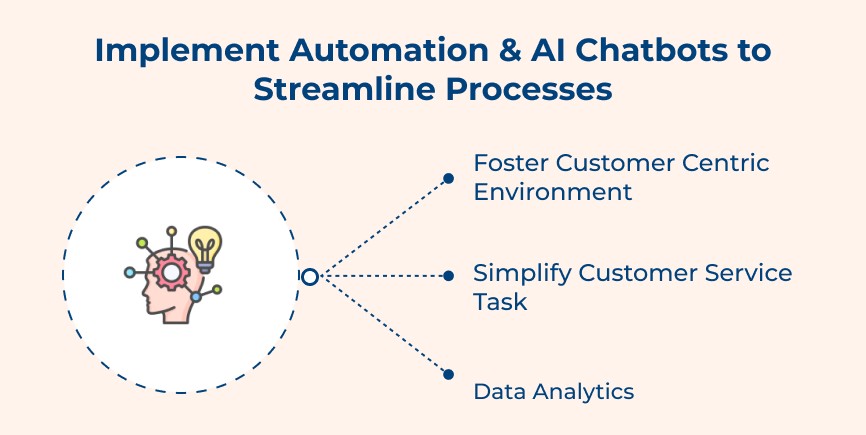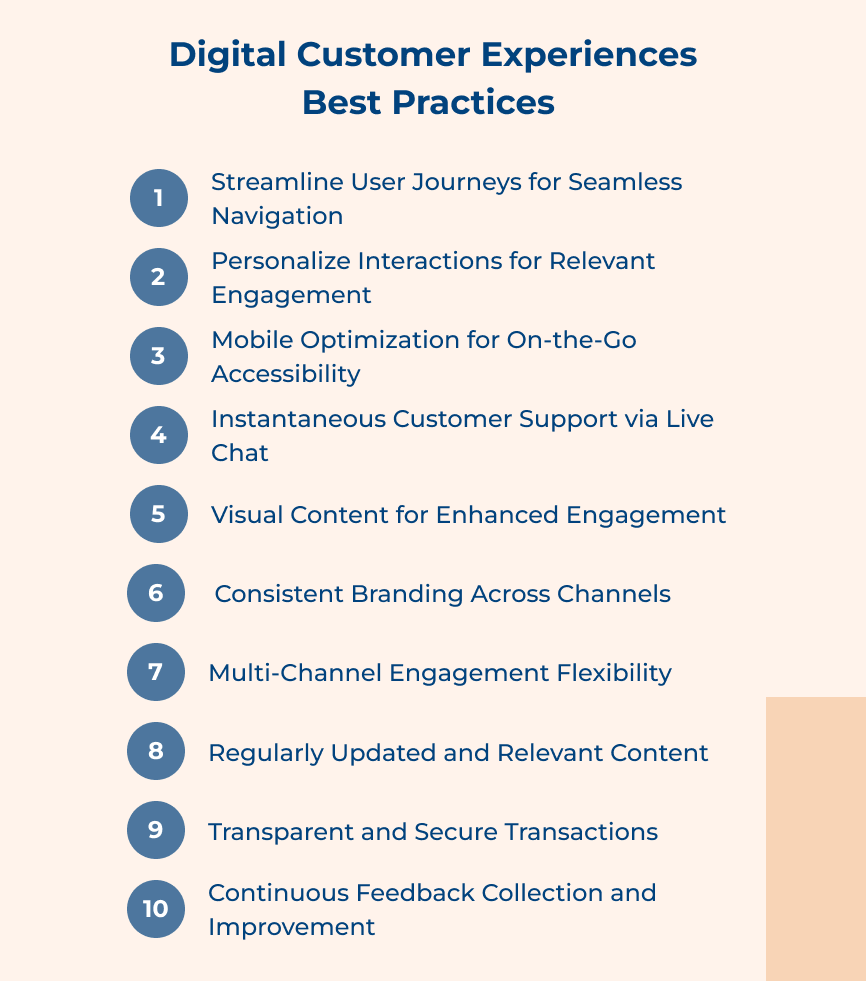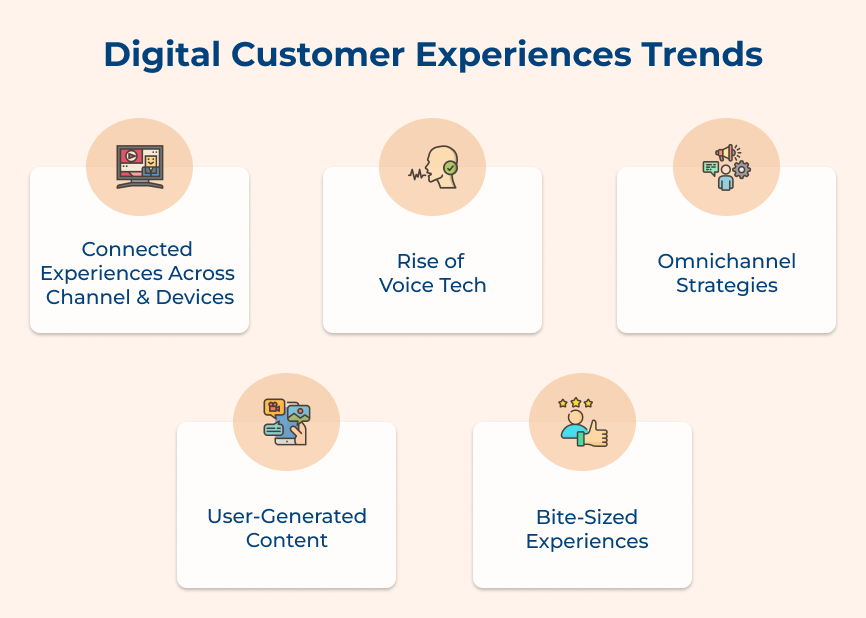1. Streamline User Journeys for Seamless Navigation
Navigating through digital platforms should be as effortless as strolling through a well-laid-out store. Simplifying user journeys is significant for enhancing digital customer experiences. Crafting clear pathways that guide customers toward their desired destinations, allows companies to minimize confusion and increase the likelihood of fulfilling their needs.
Example: Consider an e-commerce platform that employs a visually appealing homepage with distinct categories and a prominent search bar. A customer searching for running shoes can quickly click on the “Footwear” section or enter specific keywords in the search bar, effortlessly finding what they need. The seamless journey not only enhances their experience but also increases their chances of completing a purchase.
2. Personalize Interactions for Relevant Engagement
Personalization acts as a compass to drive the customers toward experiences that resonate with their unique preferences. Using customer data allows businesses to curate interactions that reflect individual tastes, purchase histories, and behaviors. Tailoring product recommendations, offering targeted promotions, and presenting content aligned with each customer’s interests enables businesses to establish a deeper level of engagement.
Example: Picture a travel booking website that remembers a user’s past destinations and suggests similar getaways. If a customer has frequently booked beach vacations, the platform intelligently presents coastal destinations for consideration. The personalized approach not only simplifies decision-making but also encourages the user to explore options they’re likely to enjoy.
3. Mobile Optimization for On-the-Go Accessibility
As mobile devices become primary tools for digital interactions, ensuring your platforms are optimized for mobile use is essential. Responsive design that adapts seamlessly to various screen sizes guarantees that customers can access your content and services effortlessly, regardless of the device they’re using. The approach not only accommodates the modern lifestyle of on-the-go browsing but also showcases your commitment to delivering convenience and accessibility.
Example: A restaurant’s website that adjusts its layout for mobile visitors ensures that potential customers can easily view the menu, make reservations and access essential information. They don’t need to zoom in or navigate through a cluttered interface.
4. Instantaneous Customer Support via Live Chat
Providing real-time assistance through live chat platforms empowers customers to get immediate solutions to their queries. Live chat provides a human touch in a digital setting. It enables the customers to receive prompt responses, clarify doubts and resolve issues without delays. The quick and convenient interaction builds trust by showcasing your dedication to providing excellent service. The approach ultimately enhances the overall customer experience.
Example: A software company’s website incorporates a live chat feature that pops up when customers explore product pages. Visitors can ask questions about features, pricing, and compatibility, receiving instant answers from a representative. The process minimizes frustration and helps customers make informed decisions swiftly.
5. Visual Content for Enhanced Engagement
Capitalizing on the power of visual content – such as images, videos, and infographics – can significantly enhance digital consumer experiences. Visuals capture attention, simplify complex information and evoke emotions more effectively than text alone. Incorporating engaging visuals into your digital platforms not only makes the content more digestible but also keeps visitors immersed in your message or story.
Example: A fashion retailer’s website combines high-quality images with short videos showcasing models wearing their latest clothing line. The dynamic presentation enables customers to see the products in action, evaluate their fit and make purchase decisions with greater confidence.
6. Consistent Branding Across Channels
Consistency in branding across various digital channels creates a unified and recognizable identity that resonates with customers. From colors and fonts to tone of voice, maintaining uniformity ensures that customers experience a cohesive journey, irrespective of the platform they engage with. Consistency bolsters brand recognition and reinforces trust, strengthening the bond between customers and your brand.
Example: A beverage company aligns its social media posts, website design, and email communications. It uses a consistent color palette, logo placement and messaging style. Whether a customer encounters the brand on Instagram, the company’s website, or in their inbox, the experience feels harmonious and familiar.
7. Multi-Channel Engagement Flexibility
Recognizing that customers have diverse preferences for communication. It offers multiple engagement channels to enhance convenience. From social media platforms and chat apps to email and phone support, providing various avenues for customers to connect allows them to choose the method that suits their preferences. The flexibility acknowledges their individual needs and reflects your commitment to accommodating their comfort.
Example: An electronics retailer offers customer support through email, phone, and a chatbot on their website. Customers can decide whether they prefer a written response, a voice conversation, or a quick chat interaction based on their situation and preference.
8. Regularly Updated and Relevant Content
Providing fresh and relevant content on your digital platforms demonstrates your commitment to staying current and offering value to customers. Regular updates like blog posts, articles, or videos, keep visitors engaged and encourage them to return for new insights or information. Relevant content showcases your expertise, builds credibility and positions your brand as a valuable resource in your industry.
Example: An interior design company maintains an active blog that offers tips on home decor trends, DIY projects, and expert advice. Consistently publishing valuable content allows the company to attract readers interested in home improvement. It facilitates a loyal readership that is likely to consider its services when the need arises.
9. Transparent and Secure Transactions
The security concerns loom large in the digital space. Prioritizing transparent and secure transactions is more than important now. Displaying clear information about payment methods, security measures and data protection not only instills confidence in customers but also ensures their peace of mind when making online transactions. Addressing potential security apprehensions openly establishes trust and minimizes barriers to completing transactions.
Example: An e-commerce platform prominently displays security badges, encryption symbols, and secure payment icons during the checkout process. The visible commitment to protecting customer data and ensuring secure transactions reassures customers and encourages them to finalize their purchases.
10. Continuous Feedback Collection and Improvement
Actively seeking customer feedback through surveys, reviews and ratings provides invaluable insights into their experiences. Analyzing the feedback equips you to identify pain points, areas for improvement and successes in your digital client experience. Continuously acting on customer input demonstrates your dedication to adapting and evolving to meet their needs. It leads to enhancing their satisfaction and driving your business forward.
Example: An online booking platform sends post-purchase surveys to customers, asking about their experience with the booking process, the quality of service, and any suggestions for improvement. Based on this feedback, the platform makes adjustments to its user interface, customer support processes, and booking confirmation emails. The improvements are not only visible to the customers who provided feedback but also contribute to a smoother experience for all users.
Digital Customer Experience vs. Customer Experience
Following are the key differences between digital customer experience and customer experience to understand how to effectively cater to each in order to optimize the journey of your customers.
Customer Experience (CX)
• Customer experience is a way of optimizing how a customer interacts with a business by making sure their needs are met in any context or situation.
• CX includes all the touchpoints that customers have with the business, from pre-sale to post-sale interactions such as visiting a website, calling customer service, or dealing with complaint resolution through social media channels.
• CX is highly dependent on human interactions and can be difficult to measure in tangible metrics.
Digital Customer Experience (DCX)
• Digital customer experience is similar to customer experience but focuses exclusively on digital interactions and experiences for customers who engage with brands online.
• DCX is driven by data and analytics to measure performance and works with technology solutions from companies such as Salesforce or Adobe Marketing Cloud.
• The goal of DCX is to enhance customers’ online experience through the use of personalized communication and content tailored to individual preferences or needs
Top Trends Shaping Digital Customer Experience
Check out the top trends that will redefine how businesses connect with their customers in the digital realm.

















